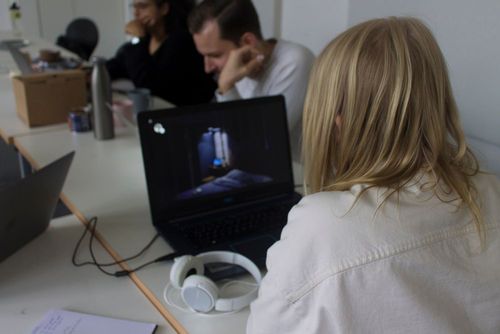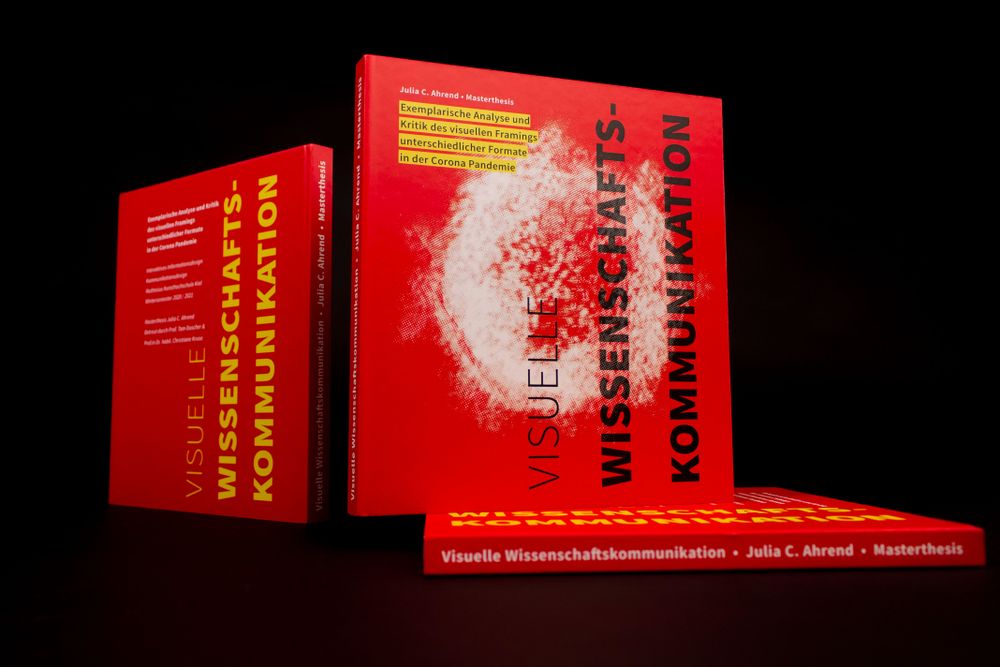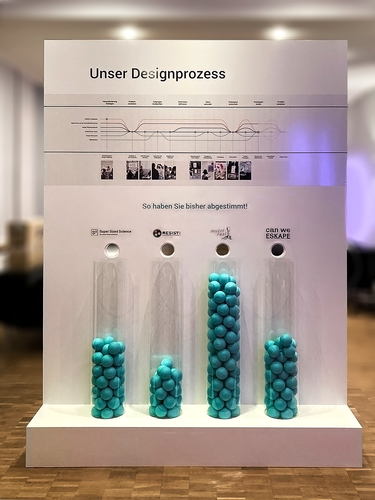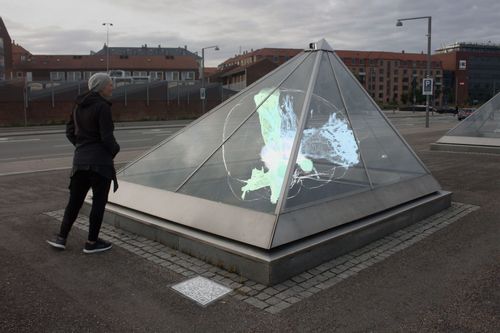Julia C. Ahrend
Julia C. Ahrend is doing her doctorate on the topic of visual science communication and is research fellow at the Department of Art and Design at HfK Bremen. Moreover she is research assistant at the Kiel Science Communication Network. In her PhD project she investigates the conditions for successful communication of scientific findings with a focus on design tools and user experience. For her, research is a symbiosis of practical work and theoretical exploration - building on her communication design studies in Kiel and Paris.
The conception and implementation of the digital escape game "Escape Covid-19" was the basis for her master thesis, a theoretical analysis and critique of the visual framing of scientific communication formats in the corona pandemic. During and after her master studies in Interactive Information Design at the Muthesius University of Fine Arts and Design in Kiel, she worked as a user experience and interface designer.
Supervisor: Prof. Dr. Annette Geiger (HfK Bremen)
Advisor: Prof. Tom Duscher (Muthesius University of Fine Arts and Design)


Online Escape Game with Science Communication
2021, Free Project
The Covid-19 pandemic introduced numerous policies that have posed and continue to pose significant challenges for humanity. During this period, the critical social value of scientific communication became apparent.
This project aims to engage new audiences in scientific communication through the popular format of a digital Escape Game. The parallels between the Escape Game genre and scientific research processes form the project's conceptual foundation: both involve solving puzzles and employing lateral thinking. Thus, this format is particularly well-suited for conveying the scientific process in an engaging and playful manner.
Interactive information design delivers essential information about the coronavirus and the vaccine debate, while storytelling offers insights into the scientific process, highlighting its controversies and iterative nature.
Scientific Background
After intensive research into the subject area of Covid-19, the Learning Objectives were developed in cooperation with Prof. Dr. Nour Eddine El Mokhtari, Chief Physician at the Center for Internal Medicine at the Imland Clinic in Rendsburg, Dr. Arne Lange (Microbiology) and Dr. Mojgan R.Gerylow (Chemistry). The key messages communicated in the game are the three major question blocks:
– What is Covid-19 and why is it dangerous?
– What can help us?
– How does vaccine development work?
Based on these, the scientific process with all its controversies is to be made comprehensible to the players. Moreover basic information on the coronavirus and the vaccination debate is to be offered. Further information can be found at wissenschaftskommunikation.de (german).
Credits
The interdisciplinary project team consists of Fine Stuhr-Wulff, Master student of Neuroscience with biophysical background at the Free University of Berlin, Cedric Köhler, student of Business Informatics at the Kiel University of Applied Sciences, and Julia C. Ahrend.
Funded by: Robert Bosch Stiftung
In Cooperation with: House of Tales Berlin
Supported by: Prof. Tom Duscher, Interactive Informationdesign, Muthesius University of Fine Arts


Exemplary analysis and criticism of the visual framing of different formats in the corona pandemic
2020/21, MA Thesis, Interactive Information Design
This thesis project contributes to the identification of potential visual frames in different science communication formats during the Corona pandemic through analysis and critique.
With a particular focus on infographics and user experience, it examines which interpretation patterns can be suggested in multimodal modern media. What potential for influencing emotions and perceptions of reality lies in framing through design? To gain insight into the diverse range of design tools in science communication, a data dashboard, a scrollytelling site, and a serious game are analyzed as examples.
Relevance
The pandemic caused by SARS-CoV-2 brings with it many political decisions and measures that posed an enormous challenge for humanity. The societal tension resulting from measures to contain the virus, economic existential threats, protests, misunderstandings, and general discontent with the overall situation highlights the relevance of science communication. It has the crucial task of providing a solid foundation for both debates and appropriate behavior through the dissemination of valid and accessible information. Visual representations shape the perception process of this communication and activate cognitive concepts.


Science Day Exhibition
2022
How can an exhibition get people thinking about scientific topics like antibiotic resistance? The concept for the Science Day of the Kiel Science Communication Network tackles this question with a voting wall, which encourages visitors to interact and participate, and with survey cards to fill in. The goal was to create an exhibition framework for the four student projects of the "PopUP! Science" course at the Muthesius Academy of Fine Arts and Design while also gauging the opinion of an interested public.
To get visitors familiar with the task we asked, which idea inspires them most on the front of the exhibit. After that, visitors could cast their votes by throwing a ball through the holes. As they walked around the wall, visitors were able to see which study project was in the lead. Through this mechanimen people were prevented from being influenced by others' votes.
Credits:
Björn Schmidt, Carolin Enzingmüller, Anna Vollersen, all members of the KielSCN-Team


Application & Installation in Public Space
2019, University of Copenhagen, Science Communication in Theory and Practice Summer Course
The objective of this project is to bridge the gap between the scientific community and the general public. But how can one reach a target group which is that broad? Especially people who aren’t interested in science seem to be difficult to reach. o address this, an exhibition was created in a public space frequented by nearly everyone: Copenhagen's metro stations. Showcasing new technology in this place has the potential to spark people’s curiosity. Especially if something unknown and new is placed into the familiar object of the metro stations glass pyramids. At the same time, the application going along with the exhibition offers some in-depth information about the scientific background. The first level of communication is the sight itself and the second level the application to zoom in on the topic.
Credits
Fine Stuhr-Wulff, Master student of Neuroscience with biophysical background at the Free University of Berlin (Scientific Input & Concept), Julia C. Ahrend (Design & Concept)